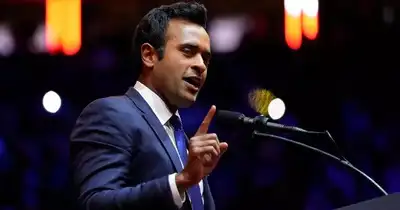Indian Americans lead 70% of top 50 US universities: Second-class citizens or pillars of academic excellence? – The Times of India

For Indian Americans, discrimination isn’t a relic of history—it lingers in subtle exclusions, offhand remarks, and unspoken barriers. It doesn’t explode in slurs echoing through Silicon Valley boardrooms. Instead, it seeps into political discourse, media portrayals, and professional hierarchies. Their intellect is praised, their achievements paraded. Yet, when they speak up, the applause fades. Your success is ours. Your voice? Not invited. It’s a paradox that continues to define their place in America—one where brilliance is embraced but openness is punished. The latest example is Vivek Ramaswamy’s abrupt ejection from MAGA’s inner circle. His once-lauded rise now meets an unceremonious fall, a reminder that Indian Americans are valued for what they contribute, but not for what they believe.
What’s even more unfortunate is the fact that the lines of exclusion are often blurred, shifting with convenience. Marko Elez, a DOGE staffer who resigned over social media posts including “Normalize Indian hate,” found himself swiftly reinstated under Elon Musk’s soft stance on second chances. “To err is human,” Musk implied, signaling that forgiveness is conditional—reserved for some, withheld from others. Backed by JD Vance and Trump, the decision underscores a lingering reality: In political power structures, Indian Americans are scrutinized, sidelined, and discarded, while others are given the benefit of redemption.
Indian Americans have long been woven into the fabric of America’s educational and intellectual landscape. Their impact isn’t just historical—it’s ongoing, shaping the present and future of US academia, research, and policy. With a formidable presence in leadership roles across top universities and institutions, they have helped build the very system that defines America as a global hub of education.
A June 2024 report by the US-based group Indiaspora, titled Small Community, Big Contributions, Boundless Horizons, underscores this influence, documenting the pivotal role Indian Americans have played in advancing education, research, and innovation. From university chancellors to pioneering researchers, their contributions have been foundational—not just to their own success stories, but to America’s standing as a leader in education and progress.
Indians lead the trail as teachers
The United States has been attracting high scorers from India for imparting top-notch education. To its wonder, Indians have played a great role in making it outshine on the global stage. With a culture deeply rooted in the pursuit of education, Indian Americans have distinguished themselves as a formidable presence within US academia. According to the Indiaspora report, over 22,000 Indian-Americans hold teaching positions at higher education institutions. On the other hand, 70% of the top 50 universities in the US have an Indian-American in a leadership role. Furthermore, 10% of the physicians in America are Indians. The influence transcends statistics; it is echoed in the pedagogical innovation and global perspectives they bring forth to American education.
Indian-American scholars have presented a conducive ground for nurturing diversity and inclusion in the academic sphere. The leadership has been a guiding light for interdisciplinary research, technological advancements, and globalisation of curriculum, uplifting the quality of education in the US.
The silent architects of US academia
Indian Americans are more than just participants in the US education system—they are among its driving forces. With over three-fourths of the community holding at least a bachelor’s degree, their footprint extends far beyond personal achievement. They dominate STEM, business, and the arts, shaping innovation, research, and mentorship that fuel the nation’s intellectual growth.
Yet, their contributions are not limited to academia. The Indiaspora report highlights that despite being a small fraction of the population, Indian Americans contribute disproportionately to the US economy, paying over 5% of the nation’s taxes. Their ascent in public service is equally striking: in 2023, 4.4% of senior public service positions were held by Indian Americans, a sharp rise from 1.7% in 2013. From university classrooms to policy-making chambers, their influence is both deep and undeniable—an often overlooked force shaping America’s academic and economic future.
Recognized or overlooked? The Indian American paradox
Despite their undeniable contributions to academia, research, and public service, Indian Americans continue to navigate a complex and often contradictory landscape in the US. Their intellect fuels progress, their leadership shapes institutions, yet their voices remain selectively acknowledged. The paradox persists—celebrated as architects of innovation but sidelined in political discourse. As America grapples with its evolving identity, the question remains: Will Indian Americans be recognized as equal partners in shaping the nation’s future, or merely as silent contributors to its success?
















